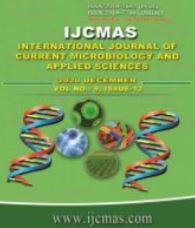


 National Academy of Agricultural Sciences (NAAS)
National Academy of Agricultural Sciences (NAAS)

|
PRINT ISSN : 2319-7692
Online ISSN : 2319-7706 Issues : 12 per year Publisher : Excellent Publishers Email : editorijcmas@gmail.com / submit@ijcmas.com Editor-in-chief: Dr.M.Prakash Index Copernicus ICV 2018: 95.39 NAAS RATING 2020: 5.38 |
Sugar cane (Saccharum officinarum L.), the tall perennial grass from the family member of the grass family Gramineae, is the major sugar crop from which sugar is produced. Study on yield gap of sugarcane was conducted in Ahmednagar district of Maharashtra. This paper is an attempt the yield gaps analysis in different planting types of sugarcane in Ahmednagar of Maharashtra. The actual yields obtained are considerable lower than those recorded in the demonstration plots and research stations/farms. Therefore, there is need to know the different yield gaps between farmer’s fields and the demonstration plots. In the present study, an attempt has been made to analysis the yield gap and constraints faced in the adoption of sugarcane production by the farmers of Maharashtra. Results reveal that the magnitude of yield gap-I was higher, which implies that, the technology developed at research station cannot be duplicated on demonstration plots to exploit the full potential of sugarcane. This gap was attributable to environmental differences and non-transferable component of technology. The orthodox practices being followed on farmer’s field lead to yield gap-II. The farmers usually do not adopt a technology as a package but take up individual practices suitably trimmed to fit into their budget and skills (management and operational) which lead to the variation in the adoption of cultural practices and consequently to the yield gaps. The yield gaps cannot be completely eliminated, but can be minimized by efficient and effective resources management
 |
 |
 |
 |
 |